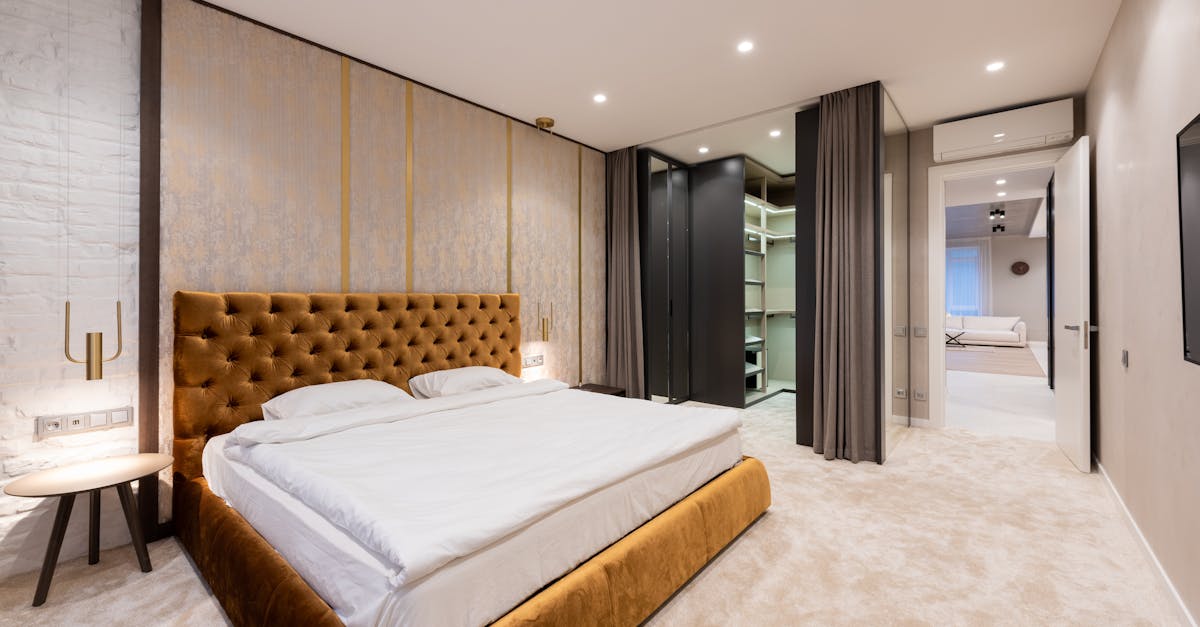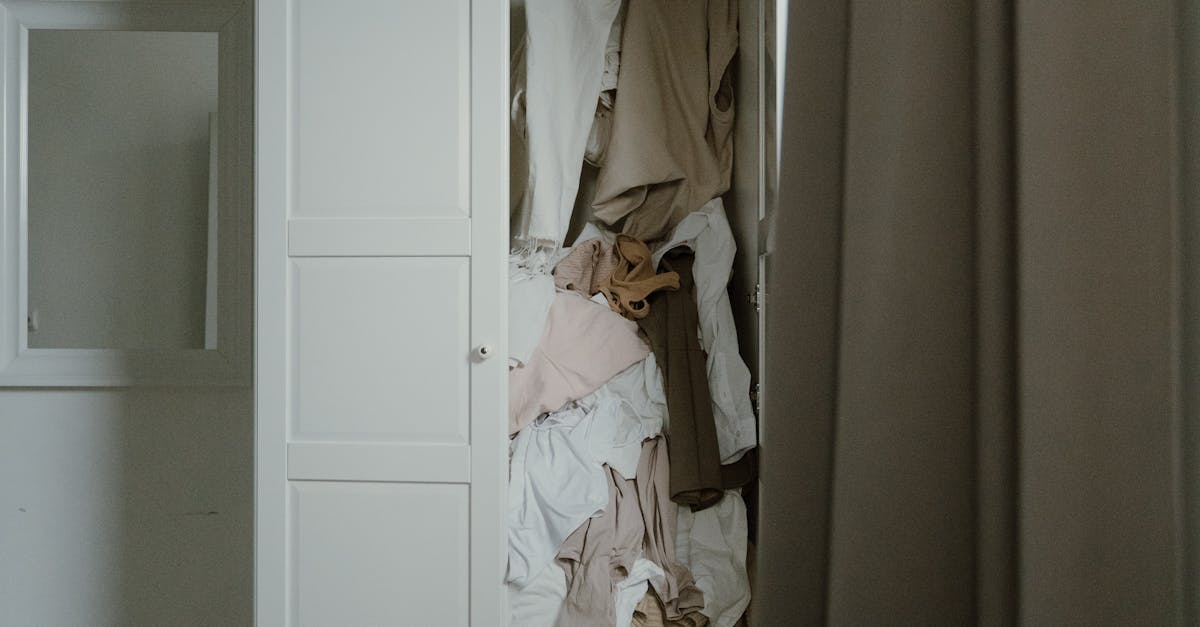
Table Of Contents
Composite Materials
Composite materials have gained popularity in the design of sliding door wardrobes due to their unique properties. These materials often combine natural wood fibres with synthetic components, resulting in a product that offers enhanced durability and aesthetic appeal. The versatility of composites allows for a wide range of finishes and textures, which can effortlessly complement various interior styles.
Additionally, composite materials are typically lighter than solid wood, making them an ideal choice for sliding door wardrobes that require smooth and effortless movement. This advantage does not compromise strength; composites can withstand everyday wear and tear while maintaining their structural integrity. With their balance of functionality and style, sliding door wardrobes made from composite materials continue to be a preferred choice for many homeowners.
Combining Strength and Style
The combination of strength and style is crucial when choosing materials for sliding door wardrobes. Composite materials such as MDF or plywood offer impressive durability while allowing for a variety of finishes. This versatility enables homeowners to achieve a look that complements their interior design, whether they prefer a modern aesthetic or something more traditional. Additionally, these materials resist warping and are less prone to damage than solid wood, making them a practical choice for everyday use.
When considering aesthetic options, sliding door wardrobes made from laminates or melamine can also enhance the overall appearance of a room. These materials can mimic the look of natural wood or feature vibrant colours and patterns, offering an element of personal expression. The lightweight nature of many composite materials further contributes to an easy installation process and smooth operation, ensuring that the sliding doors perform well without compromising on style or structural integrity.
Impact of Material on Wardrobe Weight
The choice of material plays a crucial role in determining the overall weight of sliding door wardrobes. Heavier materials such as solid wood can enhance stability and durability but may complicate installation and daily use. Lighter options, like certain composite boards or melamine, can reduce the strain on tracks, making the operation of the doors smoother. The balance between weight and structure is essential for maintaining functionality over time.
Additionally, the weight of the wardrobe influences its placement within a room. Hefty wardrobes may require reinforced flooring or special mounting techniques, while lighter ones offer flexibility in design and repositioning. Understanding the implications of material choice ensures homeowners select sliding door wardrobes tailored not only to their aesthetic preferences but also to practical considerations such as weight and usability.
Balancing Functionality and Design
When selecting materials for sliding door wardrobes, functionality should not be compromised for aesthetics. With options like plywood, MDF, and solid timber, each choice offers unique benefits. Plywood is lightweight yet durable, making it easier to operate the sliding doors. MDF provides a smooth surface that can be easily painted or finished to match various interior styles, enhancing visual appeal without sacrificing practicality. Solid timber, while heavier, adds a touch of elegance and strength, often becoming a focal point in the room.
Design also plays a crucial role in how well sliding door wardrobes integrate with existing spaces. Customisable options are available, allowing homeowners to choose finishes that complement their décor. Mirrored surfaces can create an illusion of more space, while textured finishes can add depth and character. Balancing these design elements with the right material ensures that the wardrobe not only meets functional needs but also aligns with personal style preferences.
Maintenance Requirements for Different Materials
The maintenance needs of sliding door wardrobes vary significantly based on the materials used in their construction. Wooden wardrobes, for example, require regular dusting and may benefit from occasional polishing to maintain their finish and protect against wear. It’s important to address any scratches or dents promptly to prevent further damage. On the other hand, metal frames can usually be cleaned with a damp cloth and mild detergent, although care should be taken to avoid abrasive cleaners that might scratch the surface.
Glass sliding doors can enhance the elegance of a wardrobe but necessitate attention to avoid streaks and smudges. A soft cloth or glass cleaner is ideal for keeping them looking pristine. Composite materials, popular for their blend of aesthetics and durability, should be cleaned according to manufacturer instructions, which typically involve gentle cleaning solutions. Regularly inspecting all components, including tracks and hardware, ensures smooth operation and prolongs the life of the sliding door wardrobes.
Care Tips for Longevity
Ensuring the longevity of sliding door wardrobes involves regular maintenance and care. Dust and debris can accumulate on the tracks and doors, affecting their operation over time. A simple routine of wiping these surfaces with a soft cloth will prevent build-up. Additionally, using a vacuum with a brush attachment can reach those hard-to-access areas, keeping the wardrobe clean and functional.
Lubricating the sliding mechanisms periodically enhances smooth movement and extends the life of the doors. A silicone-based lubricant is preferred, as it won’t attract dust like grease-based options. Avoid using abrasive cleaners on glass or mirrored surfaces, as these can cause scratches. Opt for mild detergents and soft cloths to maintain the pristine appearance of sliding door wardrobes.
FAQS
What are the best materials for sliding door wardrobes?
The best materials for sliding door wardrobes include composite materials, wood, glass, and metal, each offering unique benefits in terms of strength, aesthetics, and durability.
How do composite materials compare to solid wood for sliding door wardrobes?
Composite materials provide a balance of strength and style, often being more affordable and resistant to warping compared to solid wood, while still offering a stylish appearance.
Does the material of a sliding door wardrobe affect its weight?
Yes, the choice of material significantly impacts the weight of the wardrobe. Heavier materials like solid wood can provide stability but may require stronger tracks, while lighter materials like composite or glass can be easier to handle and install.
What maintenance do different materials require for sliding door wardrobes?
Maintenance varies by material; for instance, wood may need periodic polishing and treatment to prevent damage, while glass requires regular cleaning to maintain clarity. Composite materials are generally lower maintenance but should still be cleaned with appropriate products.
Can I customise the look of my sliding door wardrobe regardless of the material?
Absolutely! Many materials can be customised with various finishes, colours, and hardware options, allowing you to create a wardrobe that complements your personal style and home decor.
